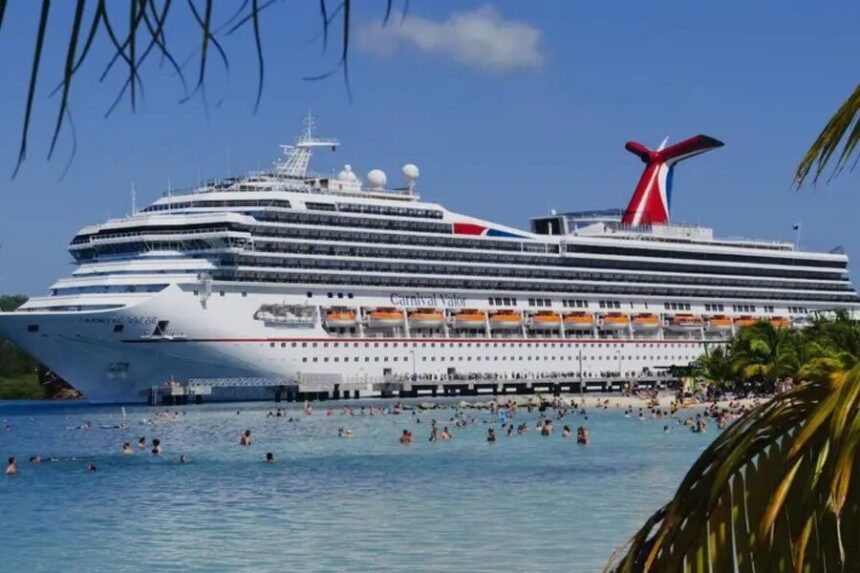In an unfolding drama that captures the perils of modern travel, the Norwegian Cruise Line became the focal point of international attention after eight passengers were stranded on the African island of São Tomé.
These passengers, including six Americans and two Australians, missed their cruise ship, the Norwegian Dawn, due to delays on a privately arranged tour, sparking a complex situation that pits customer expectations against the rigid policies of cruise operations. This incident not only highlights the logistical challenges faced by cruise lines in maintaining tight schedules but also raises questions about the balance between operational efficiency and the duty of care owed to passengers.
The tension between the stranded passengers’ plight and the cruise line’s adherence to protocol underlines a growing debate on the hospitality industry’s responsibilities and the rights of travelers in unforeseen circumstances.
The journey on the Norwegian Cruise Line was a grand 20-day voyage across Africa, beginning in Cape Town and set to conclude in Barcelona. The passengers involved, six Americans and two Australians, were not just ordinary travelers; among them were individuals with significant health conditions, including a pregnant woman and a paraplegic traveler, emphasizing the diverse needs and vulnerabilities within the group.
The locations involved in this incident are not merely geographical points but are rich in cultural and historical significance. São Tomé, an island in the Gulf of Guinea, off the western equatorial coast of Central Africa, represents a unique destination with its challenges for travelers.
Dakar, Senegal, where the passengers eventually reunited with the ship, is known for its vibrant culture and history. This backdrop sets the stage for a complex interplay between the allure of exotic destinations and the realities of navigating unexpected challenges in international travel.
On the fateful day, the eight passengers embarked on a private tour of São Tomé, diverging from the cruise’s scheduled activities. Misfortune struck when the tour overran its time, causing them to miss the 3 p.m. all-aboard time set by the Norwegian Dawn.
Despite their efforts and the local coast guard’s intervention to ferry them to the anchored ship, the captain refused to reboard, adhering strictly to cruise protocols. This decision set off a desperate and complex multi-country chase by the passengers to rejoin the ship, facing challenges such as arranging transport and navigating through unfamiliar territories, all while dealing with the absence of essential items like medications and bank cards left onboard.
Norwegian Cruise Line emphasized adherence to established protocols for passenger safety and operational efficiency, asserting that guests are responsible for returning on time. The stranded passengers felt neglected, highlighting a perceived lack of compassion and flexibility in handling their unusual predicament.
Public and expert opinions were divided; some sympathized with the passengers, citing the need for more humane policies in exceptional cases, while others defended the cruise line’s stance on maintaining strict schedules for the greater good of all passengers. Legal perspectives suggested that while cruise lines’ terms are clear, the incident calls for a review of practices concerning passenger welfare and emergencies.
The Norwegian Cruise Line incident underscores broader implications for the cruise industry, emphasizing the critical need for a nuanced approach to policy enforcement and customer care. This situation sheds light on the delicate balance between maintaining strict adherence to schedules and protocols for the collective safety and efficiency of operations and demonstrating flexibility and empathy in unforeseen circumstances.
This passage underscores a potential avenue for policy development, hinting that cruise lines could contemplate incorporating more flexible strategies to handle unique situations without undermining operational soundness. These modifications might encompass enhanced communication pathways, contingency measures for passengers who cannot reboard, and a reassessment of emergency procedures to better cater to the varied requirements of passengers.
Looking ahead, the industry might experience a transition towards policies that are not just transparent and robust but also encompass provisions for exceptional circumstances, ensuring that passenger welfare continues to be a fundamental aspect of service norms. This incident serves as a stimulus for discussion and potential transformation, intending to augment the travel experience without compromising on safety or efficiency.




